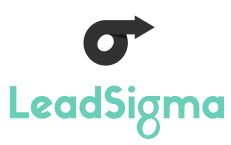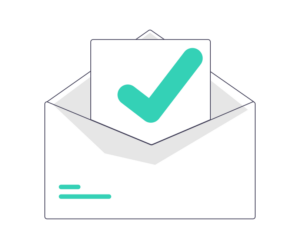Introduction
Inbound lead responsiveness is measured by the time between a lead inquiry and the response from a salesperson and the channel, frequency, and content of follow-up in the ten days following an inbound inquiry.
As a marketer, you have likely heard of the common axiom “speed-to-lead” as it applies to your lead management process. Speed-to-lead is one component of inbound lead responsiveness. It is well understood that the faster you respond to a lead, the more likely you are to qualify and/or convert it. If a prospect is in the market for your solution and they request more information, they want a response quickly…after all your prospects are less patient and more distracted than ever.
If your initial contact with a prospect is delayed by hours or days, there is a high probability that your competitor will get there first and win the business or that the prospect gets distracted by other priorities and loses interest. Shortening your speed-to-lead to near zero is critically important, as we will prove.
But speed is not the only important component of inbound lead management. Even if you are lightning fast with your follow-up there is still a large percentage of prospects that you will not engage with immediately.
So what happens then? Does the lead die? Do you make another call or send another email? Where does text messaging fit in?
In this article we are going to explore all of these questions and many more.
You will learn:
How speed-to-lead affects conversion rates
How multichannel communication affects conversion rates
The impact of phone calls on conversion rates (even in 2022)
Strategies and tactics to improve your inbound lead responsiveness
I’ll be honest; there is a lot of content about inbound lead responsiveness in the vast expanse of the internet. The volume of content on this subject caused me to question the importance of writing this article. Will it just be another slanted, boring lead magnet for LeadSigma?
But the deeper I dug, the more I realized that most of the data referenced from other articles is old…like really old.
Although the age of the data does not delegitimize it, the fact is that the expectations of our prospects are shifting dramatically and data from ten years ago is not as germain as data generated in 2022.
Fortunately, my team and our product has generated millions of data points on how different firms follow-up with their prospects. We know what works, we know what doesn’t, and I thought it was important for me to share – even if it does get lost in the expanse of the internet.
So, I decided to break down the article into three primary sections.
A summary of the historical secondary data on lead responsiveness
Primary data from from our team and our clients using millions of data points on lead responsiveness
Strategies and tactics to improve your inbound lead responsiveness
The only thing I ask of you is this:
Don’t read this article and then do nothing. This content is intended to both inform you and to inspire you to improve your lead responsiveness.
As a customer, I’m tired of crappy sales.
As a business owner, I want to offer you LeadSigma. But even if you don’t use LeadSigma, at least improve your internal processes.
Let’s change the game together!
Historical Secondary Data About Inbound Lead Responsiveness
Most articles on inbound lead responsiveness refer back to the seminole study on the topic which was published in the Harvard Business Review in March 2011. In the study, which was in partnership with a company called InsideSales.com, James Oldroid examined the inbound lead responsiveness for 2,241 US companies. His findings were shocking!
Although 37% responded to their lead within an hour, and 16% responded within one to 24 hours, 24% took more than 24 hours—and 23% of the companies never responded at all. The average response time, among companies that responded within 30 days, was 42 hours.
In the same HBR article, Professor Oldroid also referenced a separate study they conducted relating to the likelihood of qualifying a lead based on the speed-to-lead.
U.S. Firms that tried to contact potential customers within an hour of receiving a query were nearly seven times as likely to qualify the lead (which we defined as having a meaningful conversation with a key decision maker) as those that tried to contact the customer even an hour later—and more than 60 times as likely as companies that waited 24 hours or longer.
I am only copy/pasting the direct text of this article because this content from the Harvard Business Review in 2011 is the most commonly referenced information for countless articles about inbound lead responsiveness.
Just take a look at all of these:
https://blog.hubspot.com/insiders/why-your-b2b-lead-response-time-is-killing-your-business
https://www.chilipiper.com/resources/blog/speed-to-lead-statistics
https://www.qualified.com/blog/the-5-minute-rule-for-lead-response-time
And there are about 100 more articles that all say the same thing.
In summary they say this:
There is an exponential reduction in qualification and conversion rates once a lead inquires if the firm waits longer than five minutes to respond.
It took the average business 42 hours to respond to an inbound lead (for the businesses that responded within 30 days)
This is really valuable information and provided some of the motivation for me to start my company, and my team was curious about the current state of inbound lead responsiveness. Does this problem still exist, and to what extent?
We found that although businesses are getting better at inbound lead responsiveness, there is still massive room for improvement.
Primary Data on Inbound Lead Responsiveness in 2022
The State of Inbound Lead Responsiveness in 2022
Since 2021 our team has been conducting a broad study of 21,294+ companies to examine their speed-to-lead, contact frequency, channels used, and content of their communication. The firms we study primarily fit in the B2B and B2C high value products/services spaces (B2B SaaS, Veterinary, Medical Spas, etc.) and business size range from large enterprises 1,000+ locations to owner-operators.
Overall results to date:
34.0% of businesses do not follow-up with their inbound leads at all
Here are a summary of the channels used and frequency:
47.9% of businesses call their prospects at least one time
9.8% of businesses call their prospects at least two times
3.6% of businesses call their prospects at least three times
34.0% of businesses email their prospects at least one time
3.9% of businesses text their prospects at least one time
Multichannel communication:
15.0% of businesses followed-up using both phone and email, no text message
2.8% of businesses followed-up using both phone and text message, no email
0.4% of businesses followed-up using both email and text message, no phone
1.4% of businesses used all three channels (phone, email, text message)
Overall speed-to-lead of the businesses who responded in the first 30 days:
4 hours and 28 minutes
We also observed several important correlations between sales actions, conversion rates, and response rates.
If a business calls the inbound lead within 30 seconds of the inquiry being submitted it boosts sales conversions by 32.9%
If a business calls the inbound lead three times instead of once it boosts sales conversions by 48.4%
SMS receives a 703% higher response rate than email
“Cool, Scott. You guys generated a bunch of data. But what does it mean?”
Glad you asked!
There are some very interesting data points that we discovered…and it should impact how you follow-up with your leads.
You should be calling your inbound leads lightning fast.
Calling leads within 30 seconds of the inquiry resulted in 32.9% higher lead conversions.
You should be calling your leads at least three times.
When you call leads one time you are leaving about 1/3 of the opportunity on the table. We noticed that three calls is the optimal number of calls over the first 10 days. Although we did notice a slight increase in conversion rate when reps called more than three times, the gains were very incremental and small. In other words, the curve flattens out after three calls.
You need to be using SMS for lead follow-up.
…and this is not just for B2C sales. B2B response rates via SMS are similar to B2C. People are 7x more likely to respond to a text message than an email…and this makes total sense. Email open rates are about 20% and SMS open rates are about 97%. SMS cuts through the noise of their day, email is a firehose of communication that most people dread.
Do you want to see how your team’s lead responsiveness stacks up? Use our free SecretShopper Engine to discover the speed, frequency and content of your team’s lead follow-up.
Strategies and Tactics to Improve Inbound Lead Responsiveness
So you might be thinking, “This is all interesting information, but I don’t even know how my team responds to inbound leads today.”
To that I say, “NO PROBLEM!”
We actually built a free tool to help you measure your real lead responsiveness. All you need to do is enter your form information and our team will give you a beautiful report detailing the speed-to-lead, frequency of communication, and content for your inbound leads.
Check out a live version of the report here.
But enough with the self promotion, for now! 😉
Once you have identified that you do indeed have room for improvement, it’s time to make some changes.
Here are some things you can do for F-R-E-E
Speed-to-lead
Hook up Zapier to your forms.
When a lead inquires, using Zapier, shoot a message into Slack or Teams in a channel that is created only for new leads.
Require your team to monitor that channel very closely and have very loud, very annoying notifications set up for your sales team to make sure they see it ASAP.
Require your sales team to write a message in the thread that they are responding to the lead.
Measure the speed-to-lead (time of sales persons comment minus time the lead was generated) as the KPI
Multichannel responses
SMS: Use a cheap SMS application and text your leads. SimpleTexting is a good provider.
Email: Your team members have email addresses already. Use them!
Phone: See “Email” above.
Frequency
You can use a google spreadsheet to track leads. Require team members to notate each communication to ensure you are calling, texting, and emailing at least three times each.
Content
Create a phone script for voicemails that includes a call-to-action.
Create copy-pastable SMS and email templates for each stage of the communication.
Sounds daunting? Yes. I’ve done this exact process. It works, but you have to actively manage the process on a daily basis. And your data manual entry must be spot on, especially if you are managing the process with multiple team members or multiple locations.
Alternatively…and this is the self promotion piece…you could use an incredible, amazing, outstanding, exceptional tool like LeadSigma. It will literally change your life!
Ok, enough with that.
Paid Tools
LeadSigma is a useful tool and here is how it works:
You generate an inbound lead through your website, landing page, digital ad, etc.
LeadSigma immediately intercepts that lead and places the lead in your lead dashboard.
LeadSigma calls your sales team within five seconds, gives you the lead’s information, and offers a prompt to dial out to the lead immediately. At the same time, LeadSigma will immediately automate SMS and/or email to the prospect.
If you don’t connect with the lead, the LeadSigma automation sequence does all of the heavy lifting. It automates SMS and email campaigns to the lead and schedules calls for your team based on your predefined campaigns.
Here are a few things to check out:
Demo the Active Call Notification feature.
Video about LeadSigma.
Conclusion
Inbound lead responsiveness is a vital part of every business’ sales process. When your team is faster on the trigger and has consistency in multichannel communication frequency, you win more deals.
There is not a whole lot more to this discussion. If your team is slow (waits longer than 30 seconds to follow-up via phone), lacks persistence (does not make at least eight attempts to follow-up in the first 10 business days), or does not use all three communication channels (phone, SMS, and email), then you have an opportunity to improve your conversion rates.
Don’t sit on this. Take action today.



